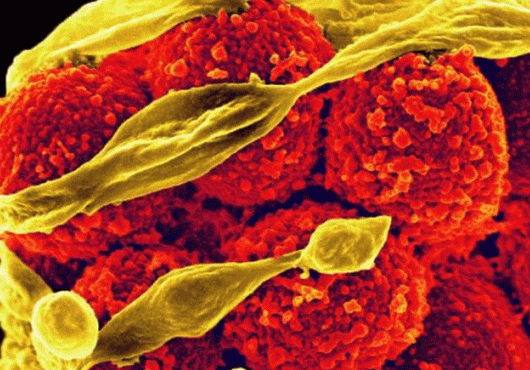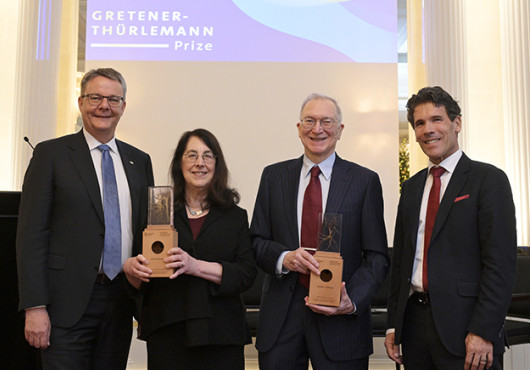
New imaging technique resolves hundreds of messenger RNAs in a single E. coli cell. Image: Ari Safatis/Boston Children’s
Researchers have created a novel imaging-technology combination that can capture gene activity in individual bacteria in their complex local environments, opening new avenues to investigate bacterial interaction, virulence, and antibiotic resistance.
The work, federally supported by the National Institutes of Health and Advanced Research Projects Agency for Health (ARPA-H), is described Jan. 24 in Science.
Senior author Jeffrey Moffitt, Harvard Medical School assistant professor of microbiology and of pediatrics at Boston Children’s Hospital, and colleagues combined two techniques — MERFISH and expansion microscopy — to profile messenger RNAs (mRNAs) in thousands of bacteria simultaneously. These RNAs represent the activity of thousands of genes. Before now, scientists could only track bacterial gene activity by averaging it across a population of bacteria.
Authorship, funding, disclosures
Additional authors include Ari Sarfatis, Yuanyou Wang, and Nana Twumasi-Ankrah in the Moffitt Lab.
This study was supported by the NIH (grants R01GM143277 and R21AI166230), Pew Biomedical Scholars Program, and ARPA-H. Portions of the research were conducted on the O2 High-Performance Computing Cluster, supported by the Research Computing Group at HMS. The authors acknowledge the Dana-Farber/Harvard Cancer Center, which is supported in part by an NIH NCI Cancer Center Support Grant (P30CA06516); access was supported by the Harvard Digestive Disease Center (P30DK034854). Members of the HMS Research Instrumentation Core Facility, supported by an NIH NEI P30 Core Grant for Vision Research (EY012196), provided technical support.
Moffitt is a cofounder of, stakeholder in, and adviser for Vizgen, Inc., and an inventor on patents associated with MERFISH, applied for on his behalf by Harvard University and Boston Children’s. His interests were reviewed and are managed by Boston Children’s in accordance with their conflict-of-interest policies. All other authors declare no competing interests.






